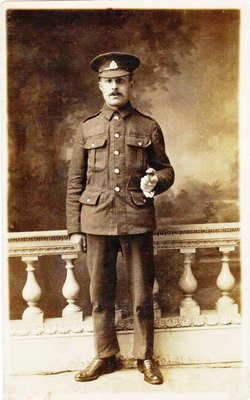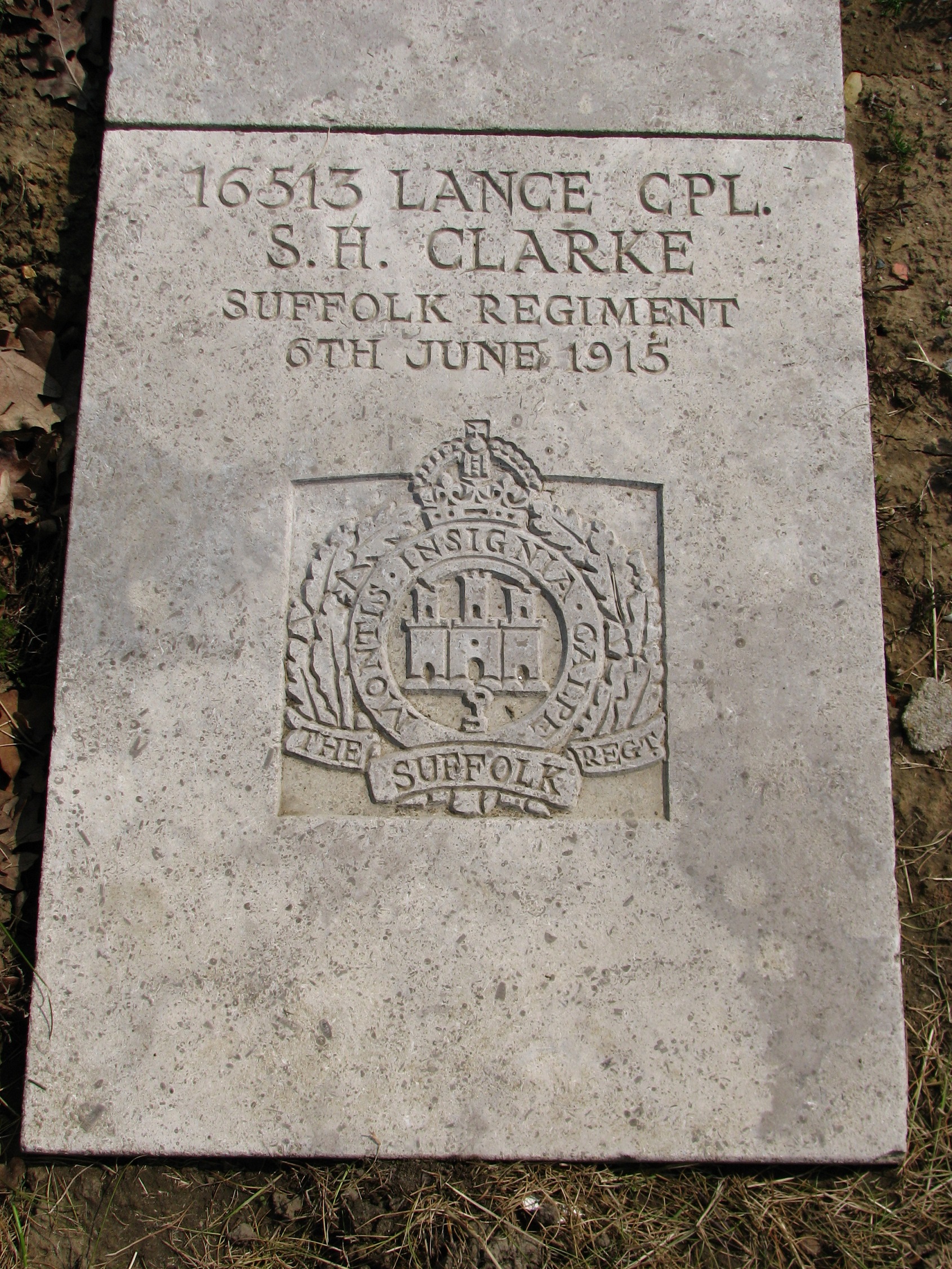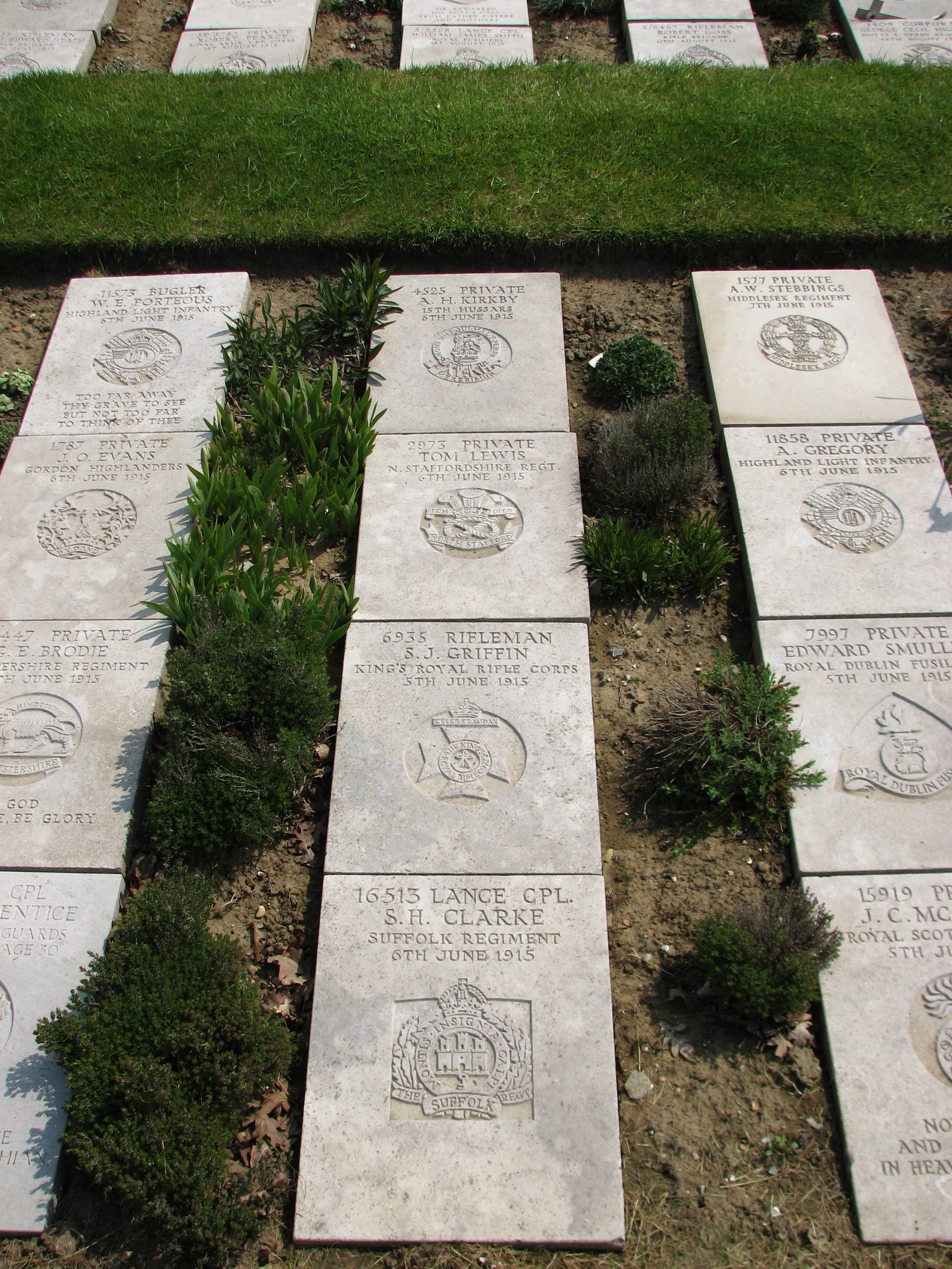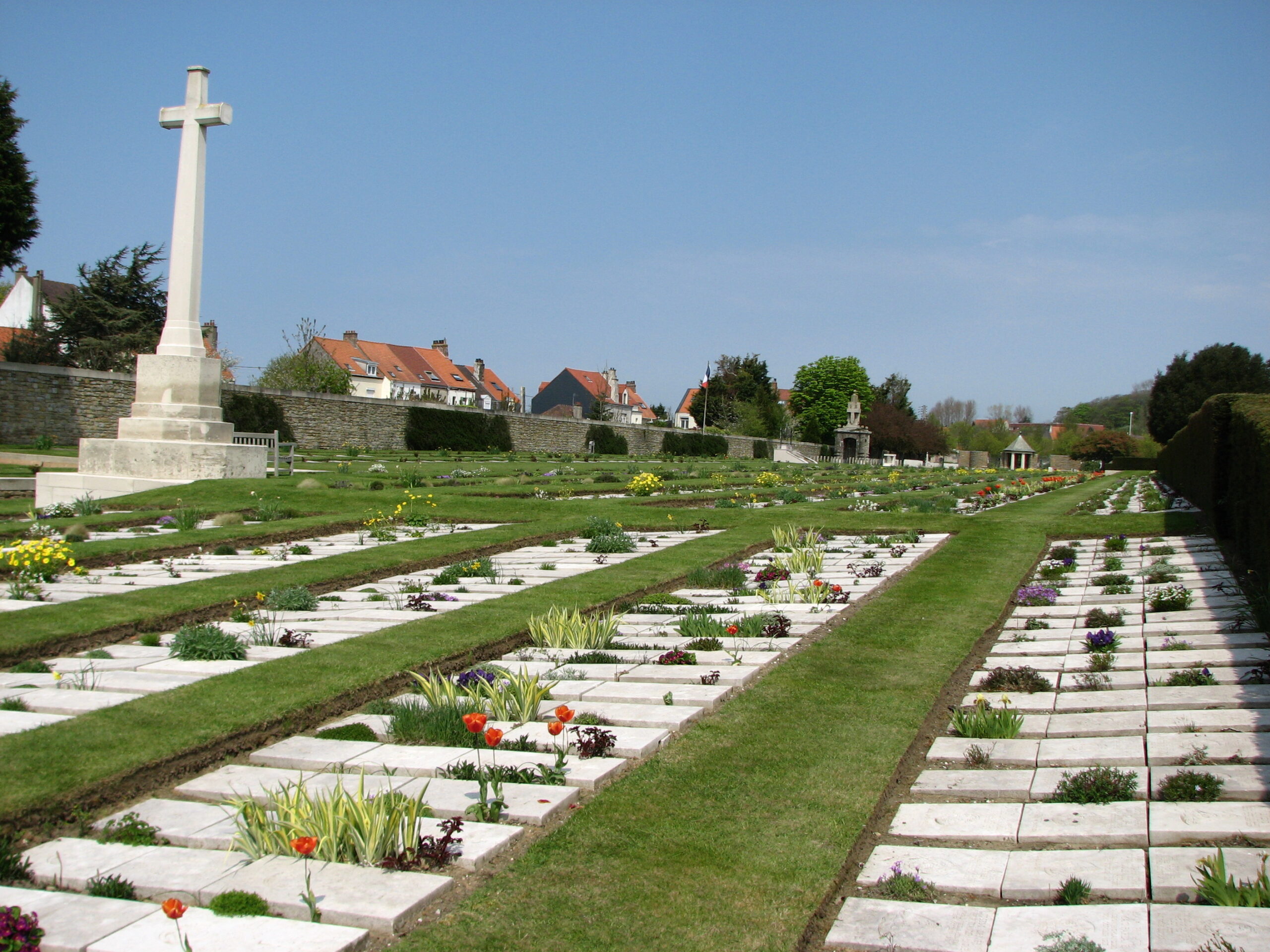Sydney Clarke (1889 - 1915)
Sydney was living in Ipswich when he volunteered to join the Army in November 1914. He served with 1st Battalion of the Suffolk Regiment and was wounded during The Second Battle of Ypres. Sydney died of his wounds in hospital in Boulogne.
- 21
- Died in the Great War
- 51.975481, 1.055649
Details
| Name: | Sydney Herbert Clarke |
| Service: | British Army |
| Unit: | 1st Battalion, Suffolk Regiment |
| Regimental Number: | 16513 |
| Rank: | Lance Corporal |
| Date of Death: | 6th June 1915 |
| Age: | 25 |
| Buried: | Plot VIII, Row A, Grave 70, Boulogne Eastern Cemetery, Boulogne, France |
Family Background and Early Life
Sydney Clarke was born in East Bergholt on 12th November 1889, the fourth and last child of Charles Clarke and his wife Sarah. Charles was a Groom and Gardener, who had been born in the village, whilst Sarah (nee Oram) was originally from Upavon in Wiltshire.
Charles and Sarah had married in 1880, and Sydney was their fourth and last child. Sydney had two sisters, Florence and Ethel, along with a brother, Charles. The Clarkes were living on Manningtree Road (now called White Horse Road) in 1881, but by 1891 had moved to The Court, in the centre of the village.
By the time that Sydney started at the village school in July 1896, the family were living on Burnt Oak Hill. Two years later they moved to Stratford St. Mary, where they lived – at least for a time – near to the Rectory.
The family subsequently moved back to East Bergholt, and the April 1911 Census shows them living at the “Dickie” public house in East End. It was usual at that time for a publican to also carry on another trade, so in addition to his duties as the licensee, Sydney’s father still continued his job as a Gardener. The Census shows that Sydney himself was employed as a General Labourer.
Move to Ipswich
Sydney later moved to Whitton, in Ipswich, and he married Charlotte Crane at the Parish Church there, on 3rd August 1914, the August Bank Holiday Monday. The wedding would have been overshadowed by the growing tensions in Europe including Germany’s recent declaration of war on Russia, and invasion of neutral Luxembourg.
The following day, Germany invaded France, and neutral Belgium. Great Britain – bound by Treaty to guarantee Belgium’s neutrality- issued an ultimatum to Germany, demanding that its Army withdraw from Belgium. Germany ignored this, so Britain was forced to declare war on Germany.
By the time of his marriage Sydney was living in Whitton, which was also where Charlotte lived. His profession on his Marriage Certificate is stated as Bricklayer’s Labourer.
Joins the Army
In November 1914, Sydney and his brother, Charles volunteered to join the Suffolk Regiment. After completion of Basic Training, he was posted to the Regiment’s 1st Battalion which had been in France as part of the British Expeditionary Force (B.E.F.) since January 1915.
Sydney disembarked in France on 1st April 1915, and joined the 1st Suffolks five days later, as part of a reinforcement draft of 115 men. The Battalion had just come out of the line, and were in Billets at Dranoutre, south-west of the Belgian town of Ypres.
The day after Sydney joined the 1st Suffolks, most of the Battalion paraded and were inspected by General Sir Horace Smith- Dorrian, a veteran of the Zulu War, and Commanding Officer of II Corps, of which they were a part.
Sydney and his Battalion went into the line on 17th April, near the village of Zonnebeke, west of Ypres. The Regimental History states that at one point here the British and German trenches “were within seven or eight yards of one another. It was indeed a lively time for the 1st Battalion, the Germans being well supplied with bombs, grenades, and trench mortars”. 1 Extract from “The History of the Suffolk Regiment 1914-1927”, by Lieutenant-Colonel C.C.R. Murphy, Hutchinson & Co., 1928.
The Second Battle of Ypres
On the evening of 22nd April the Germans launched a surprise attack to capture Ypres. The attack was preceeded by the use of poison gas against French colonial troops in the line to the North East of the town. So effective was this new weapon that the subsequent retreat by the French threatened to collapse the entire sector.
Both sides rushed reinforcements into the area, and the heavy fighting that ensued for the next month was later called the Second Battle of Ypres.
The 1st Suffolks were heavily involved, mainly in the area around the Frezenberg Ridge, and the hamlets of Fortuin and later Verlorenhoek. At one point the Suffolks and the 12th London Regiment were used to plug a gap in the line which – if exploited – could have seen the Germans in Ypres.
The Suffolks were “in the trenches” for 24 consecutive days, much of it under shellfire and in conditions made worse by incessant rain. On the 8th May, their part of the Salient was subjected to a determined German attack, supported by heavy shelling and the use of gas. Despite stubborn resistance, the Battalion was overwhelmed.
The remnants of the Battalion were collected together two days later, and moved to the rear – they numbered just 2 officers and 27 men. One of these 27 men was Sydney’s brother, Charles. The Battalion had suffered casualties of 12 Officers and 391 men, either killed, wounded or missing.
At some point during the fighting, Sydney was wounded in both legs and also his back. He was evacuated away from the immediate war zone to Number 11 General Hospital in the port of Boulogne, which prior to the War had been the Imperial Hotel.
Sydney’s family were told that the doctors thought he would be all right, and that he would be sent to England as soon as he was fit enough to travel. If this was true, then Sydney suffered complications – he died of his wounds on 6th June 1915, age 25.
Sydney was buried in the Boulogne Eastern Cemetery. He rests there still.
Copyright © Mark Ashmore, 2024.
- 21
- Died in the Great War
- 51.975481, 1.055649





